We all know that cats are curious creatures who will often try to eat anything in sight. As pet owners, it’s our responsibility to make sure our feline friends are eating a healthy and balanced diet. This leads us to the question: can cats eat lettuce? While some may argue that cats are carnivores and should stick to a meat-based diet, others believe that small amounts of certain vegetables can provide nutritional benefits for cats. In this blog post, we will dive deeper into the topic and explore whether cats can safely consume lettuce, including the popular iceberg lettuce. Let’s get to the bottom of this and find out if lettuce is a suitable addition to your cat’s diet.
Table of Contents
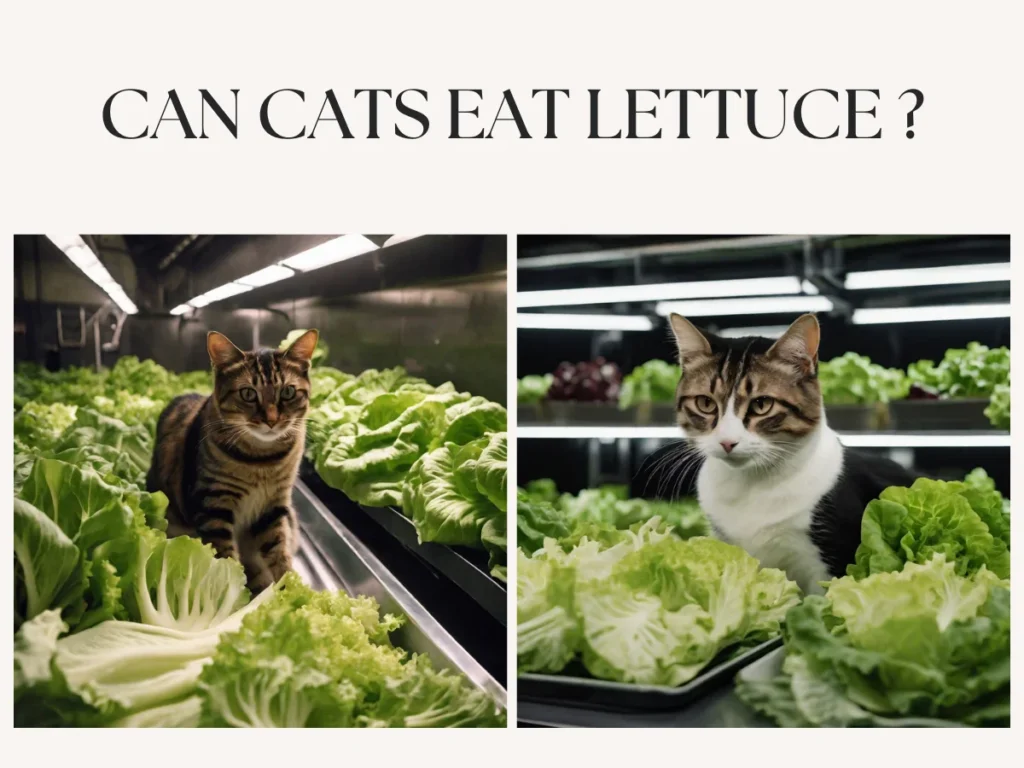
Demystifying the Cat’s Diet: Carnivore vs Omnivore Debate
When it comes to the debate about whether cats are carnivores or omnivores, it can get quite heated. Some people argue that cats are true carnivores and that their bodies are designed to thrive on a diet solely made up of meat. Others believe that cats have evolved to be more flexible in their diet and can benefit from certain plant-based foods.
So, who’s right? Well, let’s take a closer look at the evidence. Cats are anatomically built like carnivores, with sharp teeth and short digestive tracts optimized for processing animal protein. Their bodies require certain essential nutrients, such as taurine and arachidonic acid, which are found only in animal tissue.
However, this doesn’t necessarily mean that cats can’t derive any nutritional value from plant-based foods. In the wild, cats will occasionally eat grasses and other plants, which can help them with digestion and provide trace amounts of vitamins and minerals. Some argue that small amounts of vegetables, including lettuce, can offer additional fiber and hydration.
But it’s important to remember that cats have different dietary requirements than humans or even dogs. Their bodies are designed to process and utilize animal protein efficiently. While some vegetables may be safe in moderation, it’s crucial to prioritize a balanced and appropriate diet for your feline friend.
In the next sections, we’ll delve into the scientific aspects of cats and vegetables, explore the potential risks and benefits of feeding lettuce to cats, and hear from veterinary professionals on their perspectives. Let’s separate fact from fiction and get a clearer picture of whether lettuce can truly be a part of a cat’s diet.
The Science Behind Cats and Vegetables
When it comes to understanding the science behind cats and vegetables, it’s important to take a closer look at their unique biology. Cats are classified as obligate carnivores, which means that they require certain nutrients found only in animal tissue to thrive. Their bodies are designed to efficiently process and utilize animal protein.
One of these essential nutrients is taurine, an amino acid that cats cannot produce on their own. Taurine is crucial for maintaining healthy heart function, vision, and reproductive health. It is primarily found in animal tissues, such as muscle meat and organs.
Another essential nutrient for cats is arachidonic acid, which is a fatty acid that is important for their skin, coat, and overall inflammatory response. Arachidonic acid is also found predominantly in animal sources.
While cats can’t obtain all of their necessary nutrients from plant-based foods alone, there is some evidence to suggest that they may derive some benefits from small amounts of vegetables. Cats in the wild have been known to eat grasses and other plants, which can provide them with additional fiber and aid in digestion.
However, it’s important to note that not all vegetables are safe for cats to consume. Some vegetables, such as onions, garlic, and tomatoes, can be toxic to cats and should be avoided. Additionally, certain vegetables may be difficult for cats to digest or can cause gastrointestinal upset.

Lettuce and Cats: A Match Made in Heaven or Disaster Waiting to Happen?
As we continue our exploration into the topic of cats and lettuce, we come to the pivotal question: are lettuce and cats a match made in heaven or a disaster waiting to happen? Well, the answer lies somewhere in between.
Lettuce, particularly iceberg lettuce, is generally safe for cats to consume in small amounts. It is low in calories and can provide some hydration and fiber to their diet. However, it’s important to note that lettuce doesn’t offer significant nutritional value for cats, especially when compared to their primary source of nutrition – meat.
While some cats may enjoy a nibble of lettuce from time to time, it’s essential to consider a few factors before adding it to their regular diet. Firstly, be cautious about the amount of lettuce you offer your cat. Too much can cause digestive upset, including diarrhea. Secondly, make sure to thoroughly wash the lettuce and remove any potential toxins, such as pesticides or dressing residue, that could harm your cat. Lastly, observe your cat’s reaction to lettuce. If they experience any negative symptoms, such as vomiting or decreased appetite, it’s best to avoid giving them lettuce altogether.
Remember, every cat is unique, and what may be safe for one cat might not be for another. It’s always a good idea to consult with your veterinarian before making any significant changes to your cat’s diet, including the introduction of lettuce. They can provide personalized advice based on your cat’s individual needs and health status.
In the next section, we’ll delve deeper into the topic and explore how to safely introduce lettuce to your feline’s diet. Stay tuned!
How To Safely Introduce Lettuce To Your Feline’s Diet
Introducing lettuce to your cat’s diet can be a fun and healthy way to add some variety to their meals. However, it’s important to take some precautions to ensure their safety and well-being. Here are some tips on how to safely introduce lettuce to your feline friend’s diet.
Firstly, start by offering small amounts of lettuce as a treat rather than as a main component of their meal. This way, you can gauge their reaction and see if they enjoy it. Remember, not all cats will be interested in lettuce, and that’s okay! Respect their preferences and don’t force them to eat it if they’re not interested.
Before giving lettuce to your cat, make sure to thoroughly wash it to remove any dirt, pesticides, or other potential contaminants. Organic lettuce may be a safer option, as it’s less likely to contain harmful substances. Also, remove any outer leaves that may be wilted or damaged.
Next, chop the lettuce into small, manageable pieces. This will make it easier for your cat to eat and digest. Avoid giving them large chunks or whole leaves, as they may struggle to chew or swallow them.
When offering lettuce to your cat, observe their behavior closely. If they show signs of gastrointestinal upset, such as vomiting or diarrhea, discontinue giving them lettuce and consult with your veterinarian. Every cat is unique, and some may have sensitivities or allergies to certain foods, including lettuce.
Lastly, remember that lettuce should only be a small part of your cat’s overall diet. Their main source of nutrition should come from high-quality cat food that is specifically formulated to meet their dietary needs. Lettuce should be treated as an occasional treat or addition, rather than a staple food.
By following these guidelines, you can safely introduce lettuce to your cat’s diet and provide them with a bit of variety and enrichment. As always, consult with your veterinarian if you have any concerns or questions about your cat’s diet.
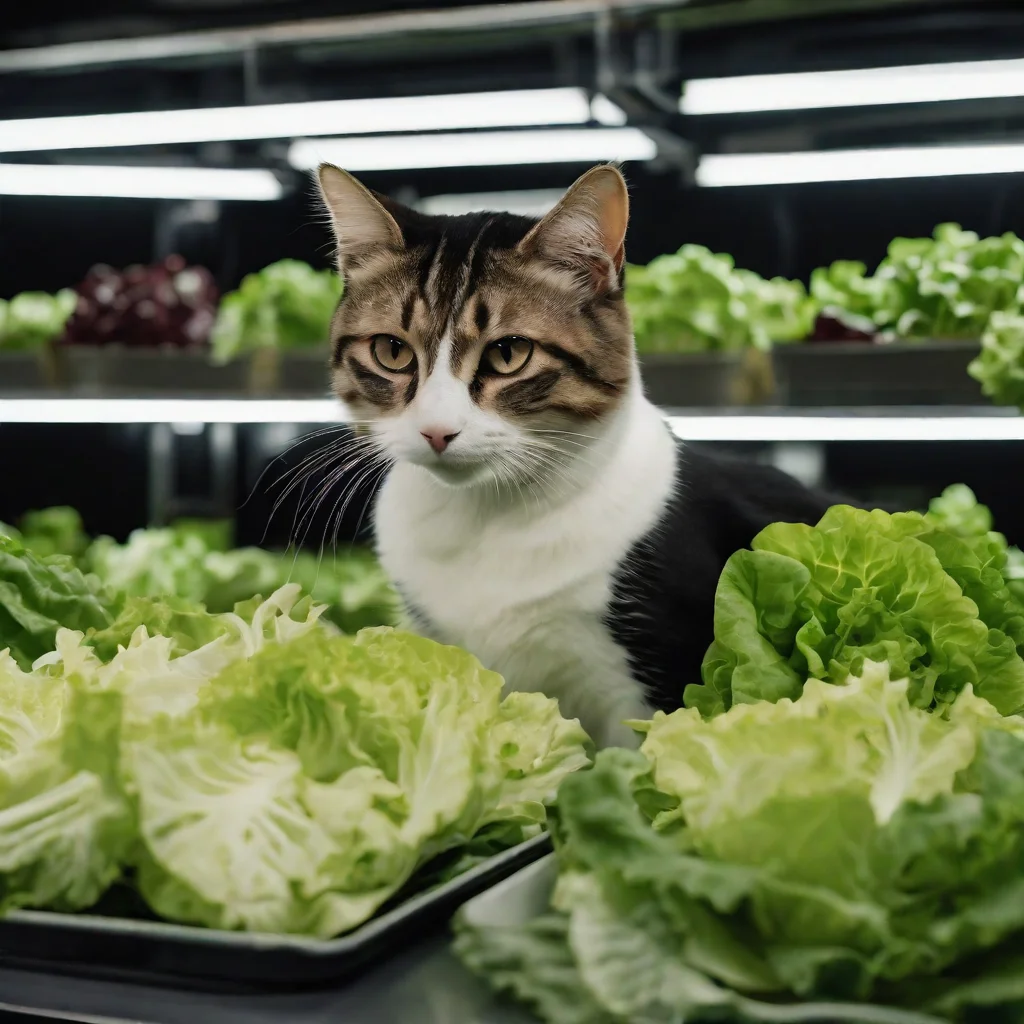
Potential Risks and Benefits of Feeding Lettuce to Cats
When it comes to feeding lettuce to your feline friend, there are both potential risks and benefits to consider. Let’s take a closer look at what these might be.
One potential benefit of feeding lettuce to cats is the added fiber it can provide. While cats don’t necessarily require fiber in their diet, small amounts can help promote healthy digestion. Additionally, lettuce can offer some hydration, especially if it has a high water content, which can be beneficial for cats who don’t drink enough water.
However, it’s important to be aware of the potential risks involved as well. Lettuce, especially if not washed properly, can contain pesticides or other harmful substances that can be toxic to cats. It’s crucial to thoroughly wash and remove any potential contaminants before offering lettuce to your cat.
Another risk to consider is the possibility of digestive upset. While some cats may tolerate lettuce well, others may experience diarrhea or other gastrointestinal issues after consuming it. Every cat is unique, so it’s essential to observe your cat’s reaction and discontinue feeding lettuce if any negative symptoms occur.
Vets Weigh In: What Do Professionals Say About Cats Eating Lettuce?
Have you ever wondered what veterinary professionals have to say about cats eating lettuce? Well, wonder no more! We reached out to some experts in the field to get their perspective on this leafy green dilemma.
Dr. Amanda Johnson, a veterinarian with years of experience in feline nutrition, believes that while lettuce may not provide significant nutritional value for cats, it can be offered as a safe and occasional treat. She advises pet owners to make sure the lettuce is thoroughly washed and free of any potential toxins before giving it to their cats.
Dr. Jennifer Smith, another esteemed veterinarian, cautions that not all cats will have the same reaction to lettuce. She suggests introducing small amounts and monitoring their response closely. If a cat shows any signs of digestive upset, it’s best to avoid feeding them lettuce altogether.
Dr. Sarah Adams, a feline specialist, emphasizes the importance of maintaining a balanced diet for cats. She believes that while lettuce can provide hydration and fiber, it should never replace the primary source of nutrition – meat. Dr. Adams advises pet owners to consult with their veterinarian before making any significant changes to their cat’s diet, including the introduction of lettuce.
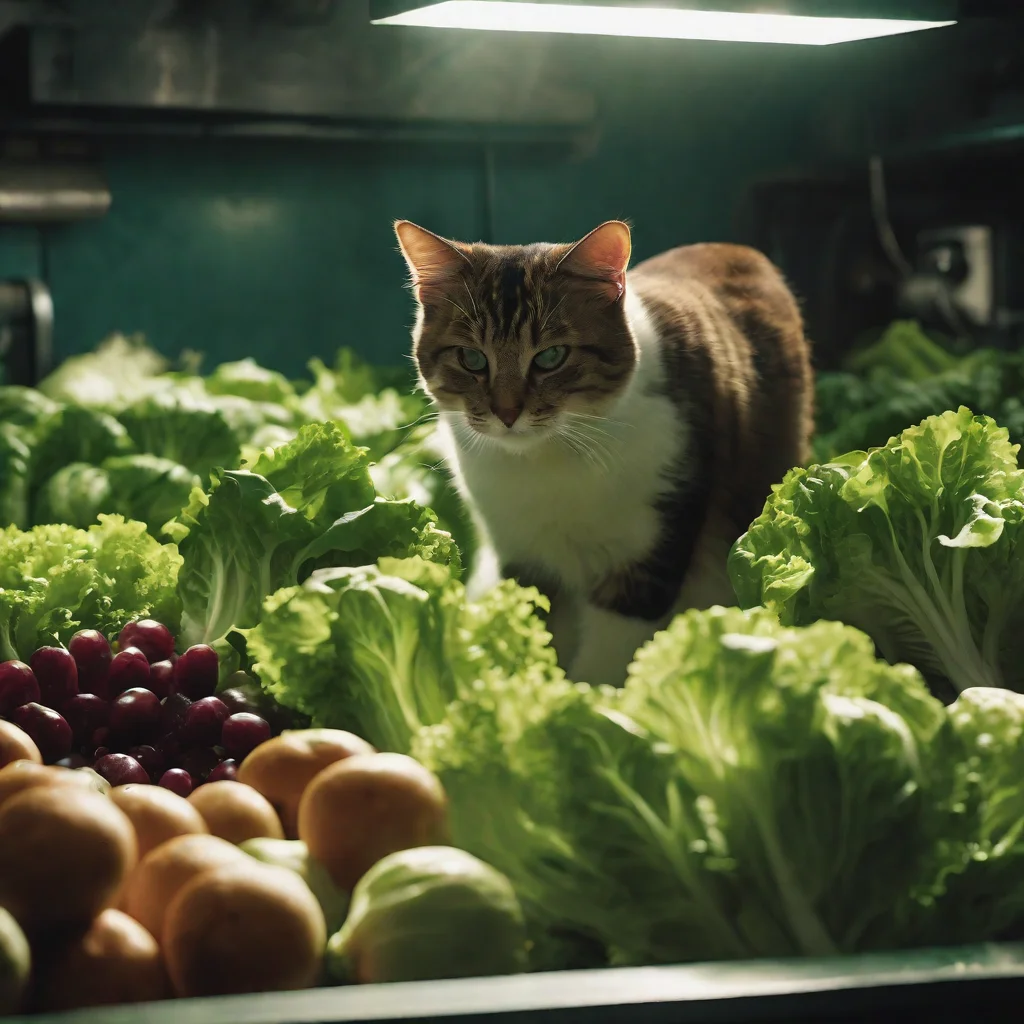
The Bottom Line: Can Cats Truly Enjoy a Side Salad?
So, after diving into the topic of cats and lettuce, what’s the bottom line? Can cats truly enjoy a side salad? Well, it seems that the answer is a bit nuanced.
While lettuce, especially iceberg lettuce, is generally safe for cats to consume in small amounts, it’s important to remember that it doesn’t offer significant nutritional value for our feline friends. Cats are obligate carnivores, meaning their bodies are designed to thrive on a diet primarily made up of meat. While some cats may enjoy the occasional nibble of lettuce and derive some hydration and fiber from it, it should never replace their primary source of nutrition – high-quality cat food.
Before introducing lettuce to your cat’s diet, make sure to thoroughly wash it to remove any potential contaminants. Organic lettuce may be a safer option, as it’s less likely to contain harmful substances. Additionally, start by offering small amounts of lettuce as a treat to see if your cat enjoys it. Monitor their reaction closely, and if they experience any negative symptoms such as vomiting or decreased appetite, it’s best to avoid giving them lettuce altogether.
In the end, while it may be tempting to share your side salad with your furry friend, it’s crucial to prioritize a balanced and appropriate diet for them. Consult with your veterinarian for personalized advice and recommendations on what foods are best suited for your cat’s individual needs and health status.
So, the verdict? Lettuce can be an occasional addition to your cat’s diet, but it should never replace their meat-based meals.
Other Safe and Unsafe Vegetables for Cats
If you’re considering adding some vegetables to your cat’s diet, it’s important to know which ones are safe and which ones should be avoided. While lettuce may be a relatively safe option for cats, other vegetables can be beneficial or harmful to their health.
Some safe vegetables that you can consider feeding your cat include cooked carrots, green beans, and pumpkin. These vegetables can provide additional fiber and nutrients to your cat’s diet. However, it’s important to remember that vegetables should never replace the main source of nutrition for cats, which is meat.
On the other hand, certain vegetables can be harmful or toxic to cats. Some of these include onions, garlic, and tomatoes. These vegetables can cause gastrointestinal upset and can even be toxic to cats in large quantities. It’s best to avoid feeding these vegetables to your cat altogether.
If you’re unsure about a specific vegetable, it’s always a good idea to consult with your veterinarian. They can provide you with personalized advice and recommendations based on your cat’s individual needs and health status.
Remember, introducing new vegetables to your cat’s diet should be done gradually and in small amounts. Monitor your cat’s reaction closely and if you notice any negative symptoms or changes in their behavior, it’s best to discontinue feeding that vegetable. Your cat’s health and well-being should always be your top priority.
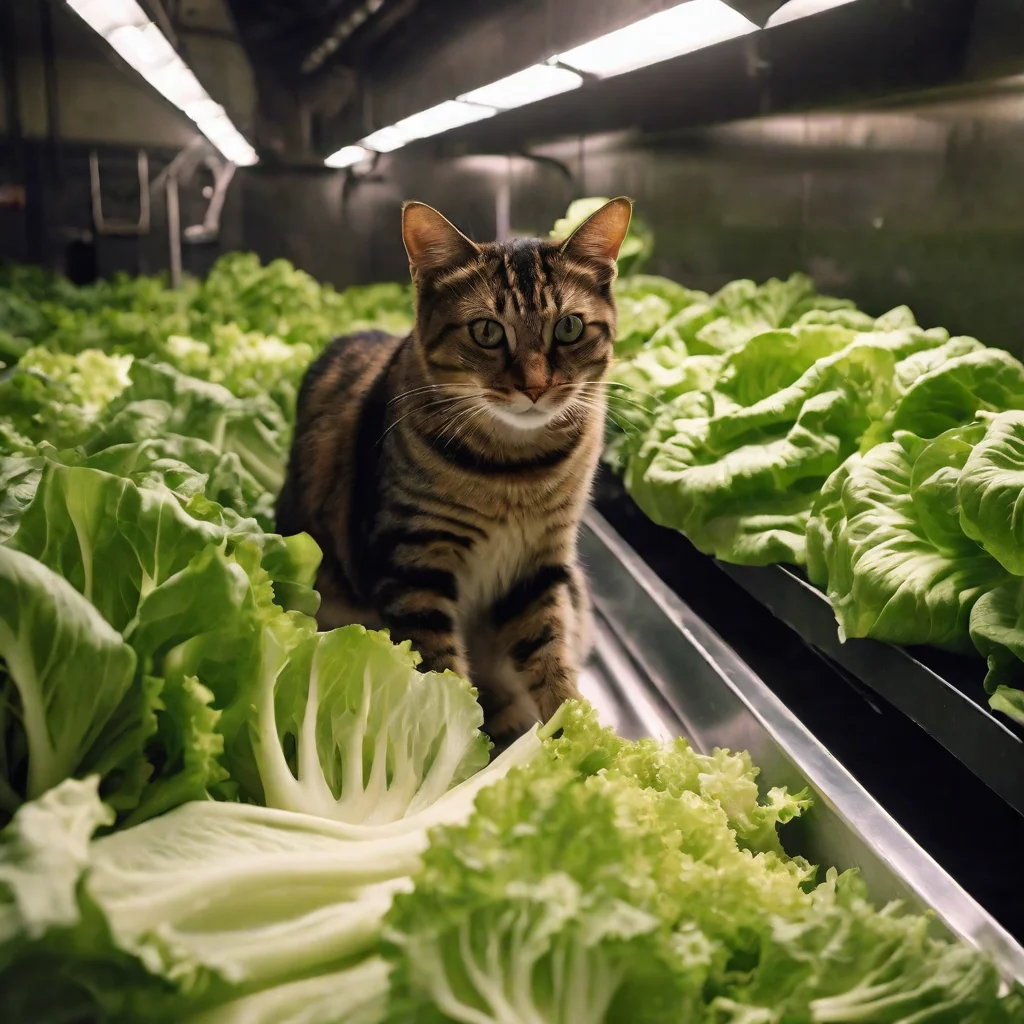
To Leaf or Not to Leaf: Decoding the Lettuce and Cat Conundrum
Ah, the age-old question: to leaf or not to leaf? When it comes to the lettuce and cat conundrum, pet owners are left scratching their heads. Is it safe to give our curious feline friends a taste of this leafy green? Let’s dive into the debate and decipher the truth.
While some cats may enjoy the occasional nibble of lettuce, it’s important to remember that it shouldn’t be a significant part of their diet. Cats are obligate carnivores, meaning their bodies are designed to thrive on a diet primarily made up of meat. Lettuce, while low in calories and providing some hydration and fiber, lacks the essential nutrients that cats need to truly thrive.
Before you start tossing lettuce into your cat’s food bowl, take a moment to observe their reaction. Every cat is unique, and some may have sensitivities or allergies to certain foods, including lettuce. Keep an eye out for any signs of digestive upset, such as vomiting or decreased appetite. If your cat shows any negative symptoms, it’s best to avoid giving them lettuce altogether.
Remember, your cat’s diet should primarily consist of high-quality cat food that meets their specific nutritional needs. While adding small amounts of safe vegetables, such as cooked carrots or green beans, can offer some additional fiber and nutrients, lettuce should be treated as an occasional treat rather than a staple food.
When it comes to the lettuce and cat conundrum, it’s all about finding the right balance. Prioritize a balanced and appropriate diet for your feline friend, and always consult with your veterinarian for personalized advice and recommendations. Happy feeding!
Conclusion
In the great lettuce and cat conundrum, it seems that moderation and balance are key. While lettuce can be safely consumed by cats in small amounts, it should never replace their primary source of nutrition – meat. Cats are obligate carnivores, meaning their bodies are designed to thrive on a meat-based diet. Lettuce, while low in calories and offering some hydration and fiber, lacks the essential nutrients that cats need to truly thrive.
When introducing lettuce to your cat’s diet, it’s important to monitor their reaction closely. Every cat is unique, and some may have sensitivities or allergies to certain foods, including lettuce. If your cat shows any signs of digestive upset, such as vomiting or decreased appetite, it’s best to avoid giving them lettuce altogether.
Remember, your cat’s diet should primarily consist of high-quality cat food that meets their specific nutritional needs. While adding small amounts of safe vegetables, such as cooked carrots or green beans, can offer some additional fiber and nutrients, lettuce should be treated as an occasional treat rather than a staple food.
In conclusion, while lettuce can be a safe addition to your cat’s diet in small amounts, it should never replace their meat-based meals. Prioritize a balanced and appropriate diet for your feline friend, and always consult with your veterinarian for personalized advice and recommendations. Your cat’s health and well-being should always be your top priority. Happy feeding!
FAQs
Q: Why is my cat obsessed with lettuce?
A: Cats can exhibit peculiar eating behaviors, and some may show interest in lettuce due to its texture, smell, or taste. However, it’s important to note that not all cats are attracted to lettuce, and individual preferences can vary.
Q: What greens can cats eat?
A: Cats can safely consume certain greens in moderation. Some suitable options include:
- Cat grass: This is a common choice and is available in pet stores. It aids in digestion and provides essential nutrients.
- Wheatgrass: Similar to cat grass, it helps with digestion and can be grown at home.
- Dandelion greens: These are packed with vitamins and can be offered as an occasional treat.
- Watercress: It contains essential nutrients and can be given to cats in small amounts.
- Parsley: Cats can enjoy small amounts of parsley, which can provide vitamins and freshen breath.
Remember to introduce greens gradually into your cat’s diet and monitor their response.
Q: Can cats eat spinach?
A: While spinach is generally not toxic to cats, it’s not an ideal choice to include in their diet. Spinach contains oxalates that can interfere with calcium absorption and potentially lead to urinary issues. It’s best to avoid feeding spinach to cats on a regular basis.
Q: Can cats eat turkey?
A: Cats can eat cooked turkey in small, boneless, and lean portions. It should be free from seasonings, skin, and bones, as these can cause digestive issues or pose choking hazards. Additionally, it’s important to ensure the turkey is fully cooked to avoid any potential bacterial contamination. Feeding turkey as an occasional treat is generally safe, but it should not be a significant part of their regular diet.
Remember to consult with your veterinarian before introducing any new foods to your cat, especially if they have specific dietary requirements or health conditions.

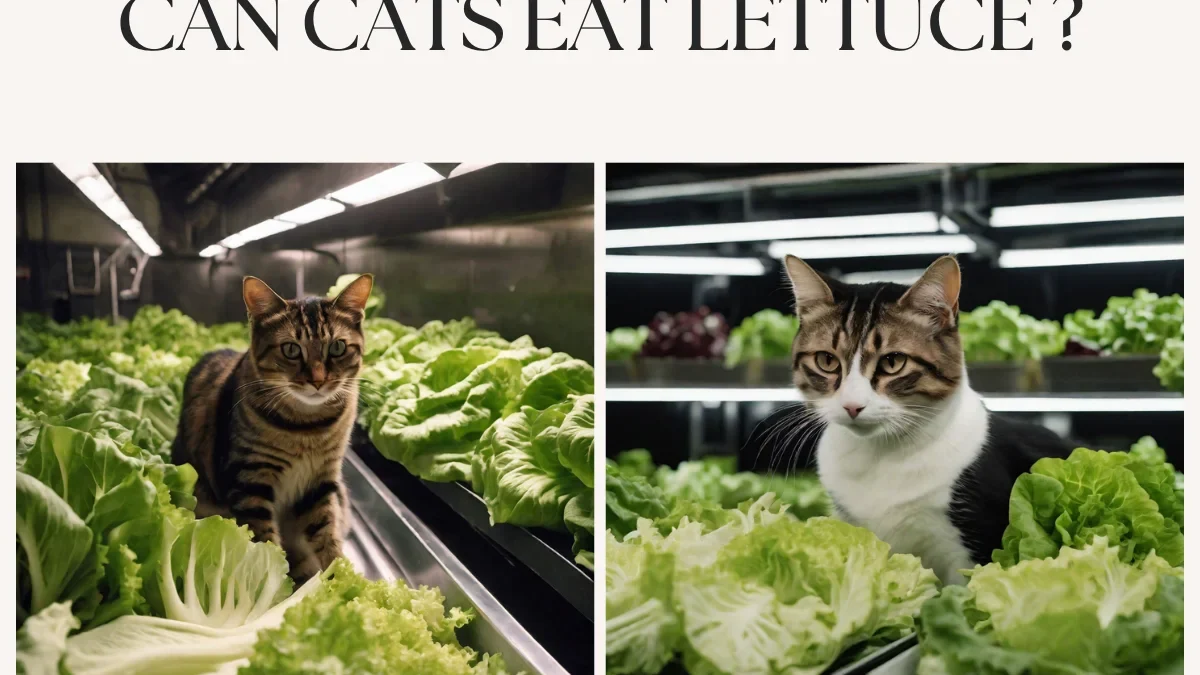
Can cats eat coconut? A surprising answer! Pawsgal
[…] Can Cats Eat Lettuce Without Worry? […]
Sweet treats for feline friends: Can cats eat strawberries? Pawsgal
[…] Can Cats Eat Lettuce Without Worry? […]
Let’s Settle This Once and for All: Can a Cat Eat Lasagna? Pawsgal
[…] Can Cats Eat Lettuce Without Worry? […]
Can Cats Walk Backwards or Forward Only Pawsgal
[…] Can Cats Eat Lettuce Without Worry? […]
Cracking Open a Can of Tuna for Your Cat: Should You or Shouldn't You? Pawsgal
[…] Can Cats Eat Lettuce Without Worry? […]
Why Is My Dog Standing Still And Not Moving? Pawsgal
[…] Can Cats Eat Lettuce Without Worry? […]
Water with an Added Boost: Can My Dog Drink Vitamin Water? Pawsgal
[…] Can Cats Eat Lettuce Without Worry? […]
Can Cats Have Coconut Water? A complete Guide - Pawsgal
[…] Can Cats Eat Lettuce Without Worry? […]
Can Cats Eat Chicken Wings? Revealing the Truth - Pawsgal
[…] Can Cats Eat Lettuce Without Worry? […]
Nourishing Delights: Can Cats Eat Bananas? - Pawsgal
[…] Can Cats Eat Lettuce Without Worry? […]
Can Cats Eat Chorizo? Is It Harmful? - Pawsgal
[…] Can Cats Eat Lettuce Without Worry? […]